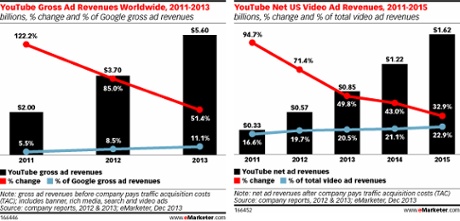HISTORY: Grupo Televisa was founded in 1955 previously names Telesistema Mexicano, this linked Mexico's first three TV's stations called: XHTV-TV (founded in 1950), XEW-TV (founded in 1951) and XHGC-TV (1952). It was owned by the Azcarrage family from the Veneszuelan Family Cisneros, who signed on Mexico's first ever radio station, XEW-AM, in 1930. The headquaters which is known as Televicentro, was originally located on Avenida Chapultepec in downtown Mexico City, the building opened on February 10th 1952.
In December 1997, Televisa joined with other Mexican media companies to create a marathon known as Teleton, whose mission is to provide knowledge about physical disabilities, giving a strong message about respect, equality and support to people in these conditions. This movement from media, enterprises and Mexicans is reflected in the buildings created with the money from this Marathon, named Centros de Rehabilitación Infantil (CRIT). It is said that sponsors use it as a way to deduce taxes as the Teletón takes place at the end of the fiscal year and therefore allows companies to deduce their donations before declaring their incomes.
MEDIA PRODUCTS TELEVISA OWN AND PRODUCE: Grupo Televisa is the second largest media conglomerate in Latin America behind Organizações Globo, with interests in television production and broadcasting, programming for pay television, international distribution of television programming, direct-to-home satellite services, publishing and publishing distribution, cable television, radio production and broadcasting, professional sports and show business promotions, paging services, feature film production and distribution, dubbing, and the operation of a horizontal Internet portal. Televisa's telenovelas generally run only one season and are broadcast internationally. The conglomerate has partially to complete interest in the following companies:
Televisa also operates a subsidiary called
Televisa Networks (it's still often recognized within the entertainment industry by its previous moniker, Visat). This subsidiary is responsible for the distribution of Televisa programmes by satellite. It is Televisa Networks that distributes the Canal de las Estrellas signal through satellite to
Europe,
Australia, and
New Zealand. Other channels under the Televisa Networks umbrella include:
- American Network (HD) - features US programs from different networks associated with Televisa.
- Bandamax- a Banda, Norteño and Regional Mexican music station.
- Canal de las Estrellas (HD) (Channel Of The Stars) - General Programming, Soap Operas, News and Sports.
- Golden and Golden Edge (HD) - movie service, showcasing Hollywood blockbusters and other films.
- Clásico TV - Shows popular TV shows from the past, specially sitcoms and children shows.
- De Pelicula - Mexican film channel focused in newest movies.
- De Pelicula Clasico - Mexican film channel focused in old movies.
- Ritmoson Latino- a Spanish language music videos station focused in tropical music (salsa, bachata, reggaetton, etc.)
- TL Novelas - a network devoted to classic telenovelas (soap operas).
- TeleHit - a channel devoted to pop music and comedic shows that usually are not safe secure to be shown in open TV.
- Telenovela Channel - is a telenovela-based cable channel in the Phillippines network owned by Twenty Plus Incorporated with the partnership of Televisa. The channel operates non-stop 24/7.
- Televisa Deportes Network (HD) - Sports Channel that is often distributed in premium cable services. Shows European soccer leagues (France and Spain) and tournaments of sports not so popular in Mexico.
- Unicable - features programming by Univision and Originals Productions.
Featured Channels
- Telemundo Latin America - features programming by Telemundo
- BBC Entertainment Latin America - features programming by BBC
- CBeebies Latin America - features programming by CBeebies of BBC
Televisa also operates Televisa Radio, under the brand name of "W Radio México"; it is primarily a news and talk station.
Televisa operated Noticias ECO, a 24-hour news channel, between 1988 and 2001.
It operated Galavision Europa, features programming by Televisa and Univision, the channel name was changed in 2006 and is now Canal de las Estrellas in Europe, Australia, and New Zealand.
INTERNET PRODUCTS THEY OWN: Televisa provides programming throughout Mexico through four networks through local affiliates. 253 Mexican local television stations (54.8% of the total commercial stations) air programming from all four terrestrial networks.
The four Televisa networks are:
| Network | Flagship | Programming |
| Canal de las Estrellas | XEW 2 | general programming, sports, first-run telempvelas, and news |
| Camal 5 | XHGC 5 | youth-oriented programming, American series, and movies |
| Gala TV | XEQ 9 | telenovelas reruns, sports, and comedy shows |
| FOROtv | XHTV 4 | all news channel, talk, and debate programming
|
FINANCIAL:
| Revenue |  US$ 5.3 billion (2012) US$ 5.3 billion (2012) |
|---|
| Profit |  US$ 672.7 million (2012) US$ 672.7 million (2012) |
|---|
FUTURE PLANS:
PROJECTS FOR 2013: As it has been traditionally done for the last years, Emilio Azcárraga Jean, Grupo Televisa's Chairman, was interviewed during Joaquin López-Doriga's prime time newscast, in iN order to provide the audience with a summary of the results obtained by the company along 2012, as well as the future plans for this 2013.
"2012 has been a year of achievements and positive results for the company, and we will continue keeping contact with all our audiences in 2013" said Emilio Azcárraga Jean at the press interview.
Young People
The young people are a very important target audience for Televisa, and it is of major importance to create new projects addressed to them. Hence, in 2012 some new productions were launched, like "Sin filtro", a show aired by FOROtv; "Creadores" a co-production with the Universidad Nacional Autónoma de México (Mexico's National Autonomous University) and the series "Nueva Vida" which tackles topics, such as pregnancy, from different perspectives.
Sports
Great challenges are to come inside the sports area. A special and thorough coverage will be made on the most important sports events that will be held throughout 2013.
Furthermore, during this 2013, a social network platform dedicated solely to soccer calledViva Fut will be launched, which will bring the audience closer to content on this sport: Photographs, videos, opinions on Mexican and international teams.
Telenovelas
Regarding the Telenovelas, the following projects are currently being produced: "Travesuras de la niña mala", a story based on Mario Vargas Llosa's book, as well as Xavier Velasco's best seller "El diablo guardián".
"I believe the combination of having these great novels written by Latin American writers brought to the TV screen, will be a great success", said Emilio Azcárraga Jean during the interview.



